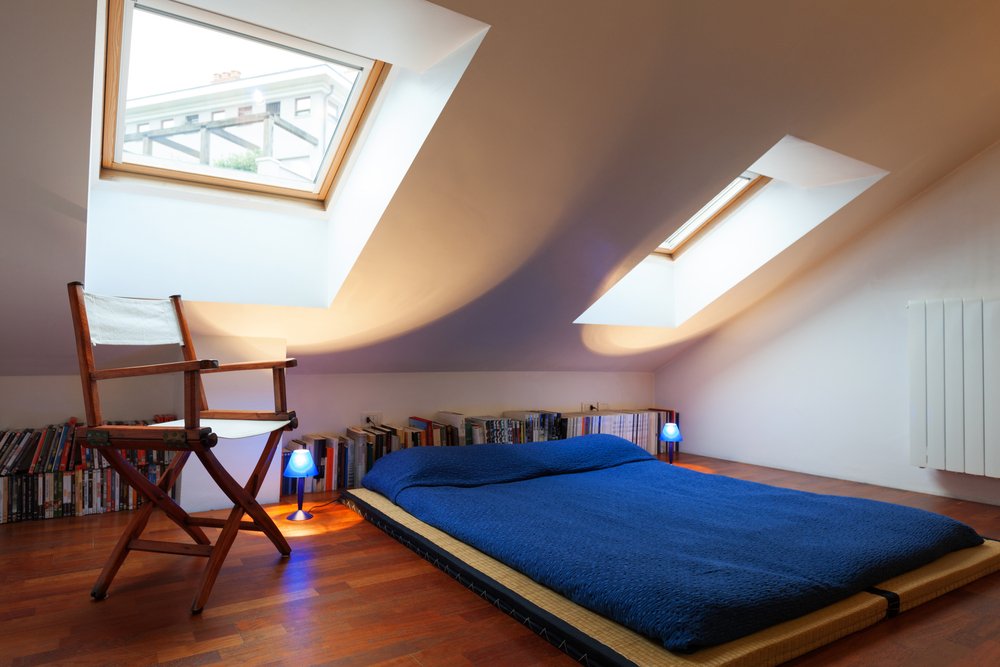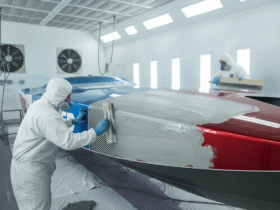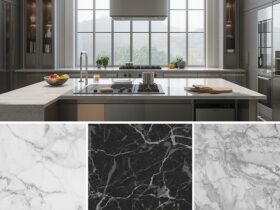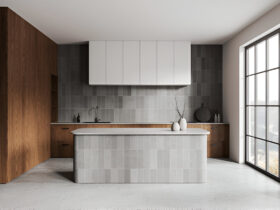Have you ever walked into a room that felt dark and stuffy, wishing there was an easy way to let in more sunlight and fresh air? Would you like to transform your home into a brighter, breezier space without a full renovation? Openable skylights might just be the perfect answer you’ve been looking for. They are designed to flood your interior with natural light, while also letting you control the breeze drifting through your living areas.
Whether you’re considering a small upgrade or you’re planning a major refresh, learning about openable skylights can spark exciting design ideas. We’ll look into their energy efficiency, discuss how they handle tough weather conditions, and delve into local regulations. So, if you’ve been thinking about boosting your home’s comfort and value, read on. Let’s find out how openable skylights can truly enhance your living space!
Understanding Openable Skylights
What Are Openable Skylights?
Openable skylights are windows installed in the roof that can be manually or electronically opened. They’re made to let in sunshine, but they also allow for fresh airflow. Unlike standard fixed skylights, which remain closed, these skylights give you direct control over ventilation. This adjustable feature can be a game-changer in stuffy rooms or spaces where moisture tends to gather, such as kitchens and bathrooms.
They come in a range of styles and sizes. Some models pop open slightly at a tilt, while others slide smoothly along tracks. There are even fully retractable versions that create an open roof feeling. Along with these design options, many modern openable skylights also include built-in rain sensors or automatic closing features.
How Do They Compare to Fixed Skylights?
On the surface, both fixed and openable skylights seem similar: they bring in more natural light than a traditional window and provide a view of the sky above. However, openable skylights go that extra step by letting you regulate airflow. This means you can keep the house cool in summer, reduce any stale air, and improve overall ventilation. Fixed skylights might stay sealed, but they offer fewer opportunities for controlling indoor air quality.
That said, fixed skylights can be less costly than openable options. If your main focus is to brighten a space without altering its ventilation, a fixed skylight could be a straightforward choice. Yet, if you want flexibility and a breeze from time to time, openable skylights often prove well worth the higher initial investment.
Key Benefits of Openable Skylights
Improved Ventilation and Airflow
Proper ventilation is absolutely key for creating a healthy indoor environment, and openable skylights excel in this area. By simply opening the skylight, you can release trapped heat and invite fresh air inside. This can be especially helpful if your space tends to feel stuffy during warmer months. Plus, better ventilation means fewer issues with humidity, condensation, or mould.
Letting air circulate freely opens up a refreshing atmosphere within your home. You’ll likely notice that musty or lingering odours from cooking or cleaning products are reduced. On top of that, improved ventilation can also contribute to emotional well-being and relaxation there’s just something uplifting about feeling a gentle breeze and catching a glimpse of blue sky overhead.

Enhanced Natural Lighting
Sunshine has a way of brightening not just your surroundings but also your mood. Openable skylights amplify the natural light entering a room and can distribute it more evenly. If you’ve got areas in your home that feel dull or closed-in, installing a skylight can dramatically change the ambience.
Moreover, when you rely on daylight instead of lamps, you’re able to conserve energy—and it’s friendlier on the budget. Whether you’re reading, cooking, or simply relaxing, an openable skylight can help you make the most of Australia’s sunny climate. It also helps reduce the need for overhead lighting, which can create a softer and more inviting setting.
Lower Energy Consumption and Bills
Because you have the ability to let hot air escape in summer and keep warmth inside during cooler periods, openable skylights can reduce the strain on air conditioners and heaters. This translates to lower monthly bills and a diminished environmental footprint. Over time, the product’s efficiency can help offset its initial purchase and installation costs.
Instead of turning on the air conditioning, you can open your skylight to let out heat that gathers near the ceiling. This strategy, paired with ceiling fans, often makes rooms more comfortable without racking up energy expenses. Meanwhile, in cooler regions, the skylight’s generous daylight can keep the interior cosy for longer, minimising dependence on artificial heating.
Adding Value to Your Home
If you’re thinking about what improvements can elevate the worth of your property, skylights tend to rank high on the list. Openable skylights, in particular, hint at a more luxurious, thoughtful design. They’re seen as an upgrade that speaks to both style and functionality, which can make your home more appealing to potential buyers.
In many cases, a well-installed skylight can become a memorable feature, helping your property stand out in a competitive real estate market. People touring your home might imagine how lovely it feels to have a sunlit, airy lounge room or kitchen. For those looking to invest in home improvements, openable skylights can be a relatively straightforward way to elevate your living space and create a lasting impression.
Selecting the Right Skylight for Your Space
Roof Compatibility and Structural Considerations
Before you invest in an openable skylight, make sure your roof can support it. Roof pitch, framing type, and material all influence the style and size of skylight suitable for your home.
A professional assessment can confirm if any reinforcements or adjustments are needed. It’s also a good opportunity to evaluate whether your desired skylight angle captures maximum natural light. Placing it too close to a tree or chimney could limit the sunlight exposure you’re hoping for.
Glazing Options and Materials
The right glazing can be a game-changer for efficiency. Double or triple glazing helps reduce external noise and control temperature fluctuations. Low-E coatings reflect heat out in summer and lock warmth inside during winter. If your region is prone to hail or intense storms, consider toughened or laminated glass.
Skylight frames typically come in materials like aluminium, timber, or uPVC. Aluminium frames are popular due to their durability and resistance to rust, especially in coastal Australian areas. Timber frames can look beautiful in period homes, but they require more upkeep. Meanwhile, uPVC frames offer a cost-effective, low-maintenance choice for modern builds.

Automation and Smart Features
Openable skylights can be operated with a simple handle, a remote control, or even voice commands through smart home systems. Automated skylights often come with sensors for rain detection or temperature adjustments, so they can close themselves automatically. This can be especially handy if you’re not home and an unexpected downpour hits.
Some models let you set timers, schedule them to close at night, or integrate with your existing smart thermostat for optimal ventilation. If you love high-tech convenience, these features can enhance your home’s overall comfort and efficiency. On the flip side, a manual option might be perfectly fine if you’d rather avoid extra electronics and the maintenance they might need.
Transforming Your Living Space with Openable Skylights
Real-Life Examples and Inspiration
Imagine a previously dark kitchen in a Sydney terrace. By installing a central openable skylight, the owner introduced bright sunlight throughout the day, keeping the area feeling fresh and modern. Another example is a cosy living room in Melbourne. The skylight added extra warmth and illuminated the décor, creating a more inviting social space for friends and family.
Personalising Your Skylight Setup
While the structural aspects matter, the smaller details—like blind styles and frame finishes—can also play a big part in personalising your new skylight. Some people choose motorised blinds for added convenience, adjusting the room’s brightness with the push of a button. Others might pick a sleek aluminium frame to mirror a contemporary interior design.
You could even play up the skyward view by placing comfy seating beneath the skylight. This little reading corner or relaxation zone quickly becomes a favourite hangout spot, especially when paired with thoughtful interior design elements. It’s all about matching your skylight with your lifestyle needs, décor taste, and the unique features of your home.
Conclusion
Whether you crave improved ventilation, want to bring in extra sunlight, or simply love the idea of gazing at the stars from your sofa, openable skylights offer brilliant possibilities. They’ve become increasingly popular in Australia for their flexibility, potential energy savings, and capacity to transform both modern and classic properties. With so many styles, sizes, and smart features available, you’re sure to find the perfect skylight design for your home.
By learning about factors like roof compatibility, glazing choices, and local regulations, you can make an informed decision that truly elevates your living space. Whether you decide to add a single skylight in a cosy reading nook or install several across your kitchen and living area, the result can be a home that feels airy, vibrant, and wonderfully connected to the outside.










Leave a Review